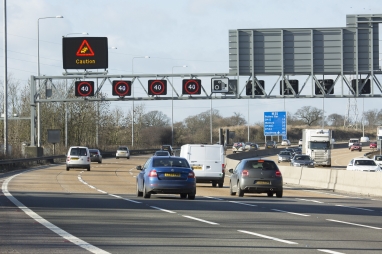- nike outlet quarry market
- Кросівки nike air jordan 1 low 'pine green' Raging Bull Toro Bravo 2021 DD0587 - SBD - 600 Release Date - AIR introducing JORDAN
- 200 Release Date - nike gold air chukka moc high school - SBD - nike gold air yeezy glow in the dark sneakers boys Rattan Obsidian CZ4149
- Adidas x Pharrell NMD HU Gold - adidas Nizza Platform Mid Parley Almost Blue W Release Date - SBD
- nike factory outlet online shopping
- Air Jordan 3 Rust Pink CK9246 600
- Air Jordan 1 Mid Bred 554724 074 2020 Release Date 4
- nike air force 1 boot cordura black wheat university gold do6702 001
- 554725 113 air jordan 1 mid white black 2020 for sale
- Air Jordan 1 Paisley Bandana Release Date
- Home
- News and analysis
- Info hubs
- Events
- Video
- Case Studies
- About us
- Magazine
- Advertising
Produced for the industry by the Association for Consultancy and Engineering
Analysis
All-lane-running: publicity drive and more data crucial to break Parliamentary impasse

Government has acknowledged that it must do more to raise awareness of all-lane-running (ALR) and how Smart Motorways are operated. Otherwise, it will fail to correct an imbalance between public perceptions and the safety of Smart Motorways.
The Department for Transport and the House of Commons Transport Select Committee have reached an apparent impasse on ALR. Following on from publication of the Select Committee's highly critical report on ALR in June this year, DfT's response was published last week.
But MPs remain opposed to the conversion of hard shoulders for use as permanent running lanes due to numerous concerns over the current design, the way Smart Motorways are operated and perceived safety risks for motorists and recovery personnel when vehicles stop in live lanes.
The Select Committee issued a statement last week urging the government not to ignore the safety concerns. The Committee chair Louise Ellman said: "The DfT is blatantly ignoring the safety concerns set out in our report. We had barely received the response to our report before the Government endorsed an all lane running scheme on the M4.
"The Committee isn't arguing with the Government about the need for more capacity on our motorways, or their statement that motorways are our safest roads. We support smart motorways such as the M42 scheme.
"But we take real issue with the Government's assertion that all lane running schemes on motorways are no different to other types of roads without hard shoulders. Motorways are a different class of road and drivers have different expectations when using them."
The Select Committee's report on ALR concluded that the safety case for converting hard shoulders to permanent running lanes was flawed, and that government should not continue its Smart Motorway programme until safety concerns are addressed. The Committee of MPs also said Highways England should revert back to the design of the Active Traffic Management pilot scheme – the forerunner to the Smart Motorway concept – which, on the M42, has sign gantries and ERAs at closer spacing and hard shoulders used as running lanes at times of peak traffic flow only.
The government response acknowledges that compliance with Red X signs closing lanes when a vehicle breaks down is a problem and that there is a need for better information for motorists. A further reminder of Highways England's problem with public perception was provided by the results of an AA survey last week which showed eight out 10 of the AA's members feel that ALR has made motorway driving more dangerous.
Highways England will launch a further concerted publicity campaign across different media and with motoring organisations in spring 2017, the government response says. But the government rejects the accusation that it has been complacent. Development of Smart Motorways from ATM to the current ALR configuration has evolved over time, using an iterative process based on evaluating evidence of safety, it says.
Government also points out that many A-roads operate at 70mph without a hard shoulder or monitoring by Highways England Traffic Officers and with ERAs at spacings equal or larger to Smart Motorways. This has carried no truck with the Select Committee, however.
DfT and Highways England clearly have a critical job on their hands convincing MPs, stakeholders and the public. A director of one consultant involved in the Smart Motorway programme said: "The Select Committee seems to be taking little notice of the evidence that Highways England has presented. The whole development of Smart Motorways to ALR has been based on assessment of evidence and detailed risk analysis."
Highways England's use of risk analysis is another crucial point that MPs and DfT disagree on. The Select Committe called the method and analysis of risks 'disingenuous', saying it is wrong to increase some risks to decrease others. The government has rejected this, saying: "The approach taken for balancing risk through the safety assessment for All Lane Running, based on the Globally At Least Equivalent (GALE) concept is exactly the same methodology used in the assessment for the part-time hard-shoulder-running which the Committee supports. The approach to the management of safety risk, set out in the Design Manual for Roads and Bridges (GD041), is compliant with the relevant legislation and reflects the Health and Safety Executive’s guidance Reducing Risks, Protecting People. It is also aligned with departmental guidance used by other sectors, such as rail."
Government's case is not helped by the fact that it ihas not yet presented three years' of safety data – the recognised norm of assessment for making safety-critical decisions. The first sections of ALR on the M1 and M25 opened in 2014. More data and greater communication will be vital for breaking the impasse.





